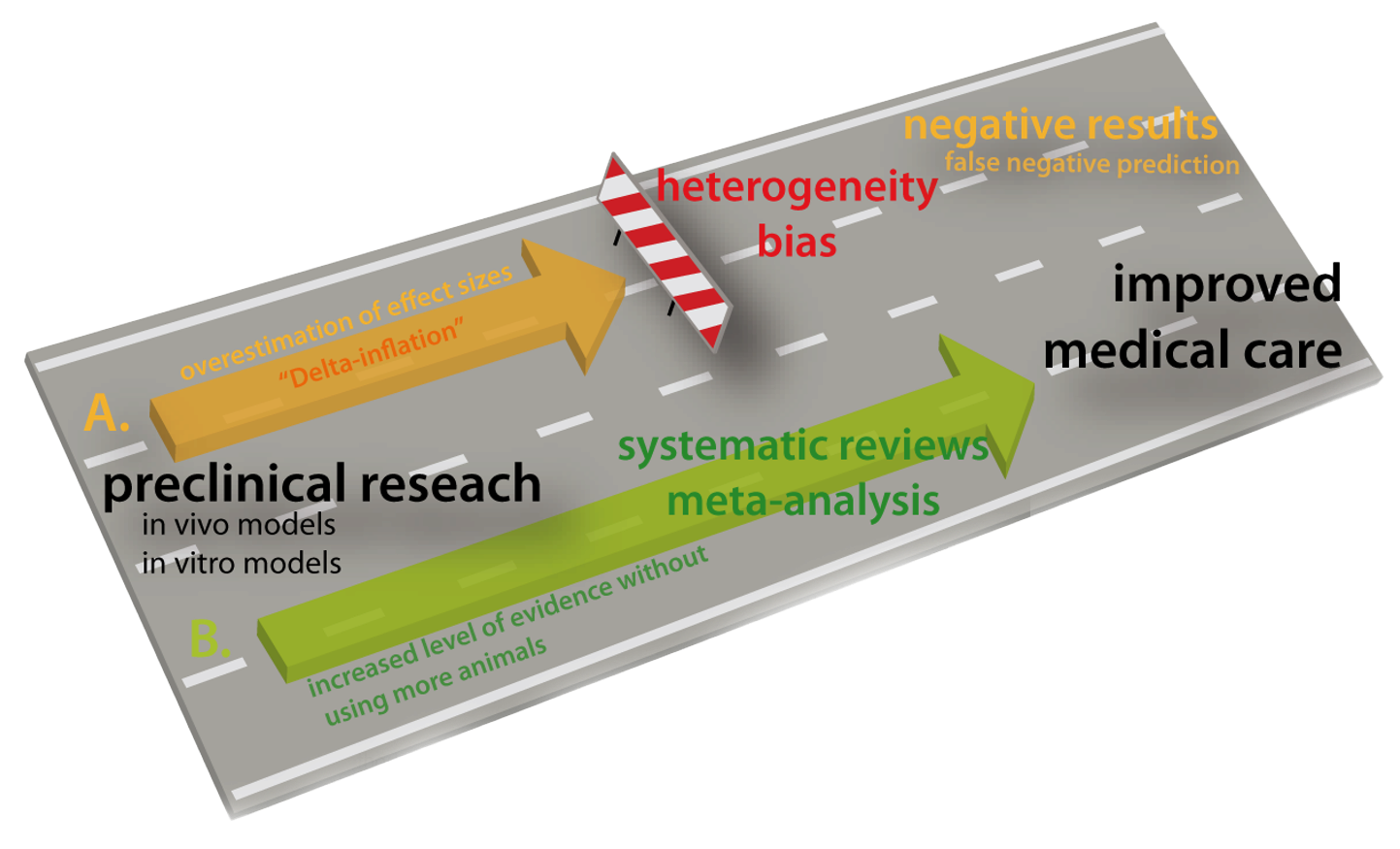Animal studies are essential for understanding the pathophysiology of diseases and for establishing safety and efficacy of new drugs and treatments prior to application in human patients. However, in recent years doubt has been casted on the translational and predictive value of animal models. Moreover, positive results from animal studies often do not translate into positive results in human clinical trials (‘Translational roadblock’). We propose that adopting the tool box of advanced, innovative systematic reviews and meta-analysis from the clinical realm to ‘evidence-based animal research’ will have major impact on the translational process. By weighting the quality of animal studies and controlling for the presence of bias (e.g., positive results are more likely to be published than neutral or negative data) the contribution of bias will be minimized, and hence results more predictive. By combining the evidence derived from animals reported in the available literature this approach will minimize the use of additional animals in preclinical research to improve statistical power, thereby offering an add on information and allowing for improved predictive value. Specifically, we aim to build on our and others work to improve the predictive value of preclinical models in spinal cord injury (SCI) research. Adjusting for bias based on existing data improves the valuable translation of preclinical spinal cord injury studies into the clinic without the need to sacrify additional animals, which targets the principles of the 3 R: Replacement, Reduction and Refinement.

(A) "False positive" results from animal studies - in relevant parts due to bias - will not translate into positive results in human clinical trials (translational roadblock', red coloured). (B) By applying a 'systematic meta-analytical methodological toolbox based on available literature, our approach aims to improve the predictive validity of preclinical models in spinals cord injury research (yellow coloured) and adjust for quality and missing datasets. Based on available literature this advanced biostatistical approach will contribute to the validation of preclinical interventional strategies to foster neurological locomotor recovery after SCI. Moreover, for reaching this task of generating higher classes of preclinical evidence, no additional animals are needed to be sacrificed. Reducing the amount of false positive approaches would be of help top reduce socioeconomic burden for the society.